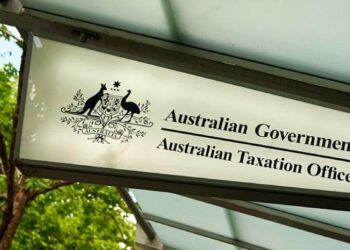As Parliament has yet to pass the six-member SMSF bill entering April, the new changes can only come into effect in the next financial year, providing time for advisers to weigh in on potential positives and negatives of increased members.
Townsends Business and Corporate Lawyers managing solicitor Jeff Song said the maximum number of members in an SMSF is expected to increase from four to six in the near future, and with economies of scale/pooling of resources, this could open doors to new SMSF opportunities.
But Mr Song noted that, on the other hand, having more members in the same fund will increase the likelihood of disputes.
“If there is an unfortunate falling out, can a member with a majority interest in an SMSF expel another member?” Mr Song said.
Mr Song provided an example where the new law for six-member SMSFs has come into effect which will impact the White Castle Family Fund, of which Castle Pty Ltd is the corporate trustee.
Consider John and Mary and their two daughters, Jessica and Melanie, were the initial members of the fund and Melanie’s husband, Harold, has been admitted as the fifth member of the fund after the limit increased to six.
“With the pooled resources, the fund then bought a commercial property and leased it to their family business run by John and Mary,” Mr Song said.
“Harold then had a major falling out with John. John has the majority balance in the fund, with his member balance accounting for $3 million out of the total $5 million in the fund. John wishes to remove Harold as a member of the fund, but Harold is simply ignoring John’s wishes.”
Trust deed of the fund and the constitution of the corporate trustee
In examining the situation, Mr Song said the current trust deed might provide a mechanism for removing a member by giving the trustee or the member(s) with the majority balance the power to remove a member.
“If John has that power, as the member with the majority interest, he can follow the applicable governing rules to exercise his power to remove Harold as a member. If the power is in the trustee, the constitution of the corporate trustee needs to be checked to see how the directors can validly make decisions for the company,” he said.
“If the constitution requires unanimous agreement of all directors, then it seems unlikely in our example that Harold will agree to the decision to remove himself as a member of the fund.
“If, on the other hand, the constitution provides for decision by majority votes, where each director’s voting power is simply one vote or is proportionate to their member balance in the fund, then John may have the control over the trustee’s exercise of the removal power, either because he and Mary and their other daughter vote to remove Harold, even though Harold and Melanie vote against, or because John and Mary control the voting power through the value of their interests in the fund.”
Mr Song said it’s also worth considering the shareholding structure of the company, as it is not a requirement for all members to be shareholders of the fund’s corporate trustee.
“If John is the sole shareholder of the corporate trustee which needs unanimous agreement of the directors for making decisions, he can remove Harold as a director of the corporate trustee who is unlikely to co-operate,” he explained.
“The fund would then be non-compliant (all members have to be directors), but John could then swiftly move to remove Harold as a member, thereby returning the fund to compliance within the ATO time guidelines for such rectification.
“However, exercise of the removal power by the member(s) or the trustee is not the end of the story, and there are other and perhaps more difficult hurdles in getting Harold’s member balance out of the fund.”
In order to implement the decision to remove Harold as a member, Mr Song said the trustee must be able to pay his benefits out of the fund, and assuming he hasn’t met an unrestricted condition of release, his benefits must be rolled over to another regulated superannuation fund.
This is also reflected in SIS regulations which expressly state that a member’s benefits in a fund must not be rolled over from the fund without the member’s consent to the rollover.
“This means the fund is unable to give effect to its decision to remove Harold as a member if Harold doesn’t consent to his balance being rolled over to another fund,” Mr Song said.
“Arguably, there is an implied consent from Harold upon his admission, as he would have agreed to be bound by the governing rules in the deed which provide for a mechanism for his removal.
“However, there is a level of risk in relying on this argument, as it can be uncertain whether the governing rules, Harold’s member admission documents and other circumstances giving rise to the implied consent are sufficient to satisfy the ‘consent’ requirement under the regulations.
“While the term consent is not defined in the regulations, appropriately drafted governing rules and member admission documents may prove to be effective in satisfying this consent requirement.”
Mr Song added that if the trustee gets over the consent hurdle, another potential challenge may be in raising sufficient liquidity in the fund to roll over Harold’s benefits.
“This would include owning a lumpy asset (i.e. the commercial property), poor return on investments (i.e. temporary COVID rent relief), and minimum pension payment obligations for retirement phase members may exacerbate this issue, and in an unfortunate scenario, the fund may be forced to sell investments with unexpected tax consequences,” he said.
“Issues discussed above are not exhaustive and there is no one-size-fits-all solution to the issues. Trustees considering multi-member funds should consider seeking early advice to prepare their funds for potential disputes. They should also ensure that the draftsman of the fund’s trust deed has considered these possibilities and prepared the deed accordingly.”



I believe that 6 members is a recipe for disaster. Too many issues and and with Lawyers involved means no money left for retirement. What sole purpose test?
The bottom line is, you are better off having two member only (Husband & Wife) fund with corporate trustee
The next problem is where to roll the benefit out to. You need the member’s co-operation with this, and if they are unwilling/unable, my understanding is that you are stuck.